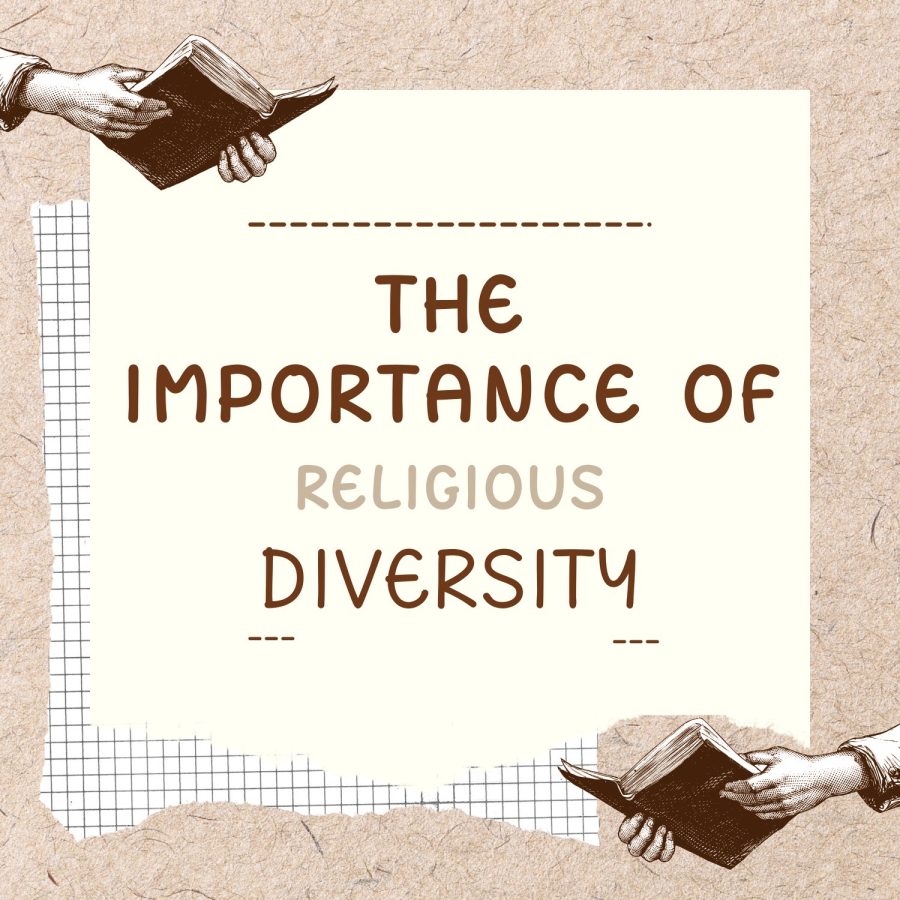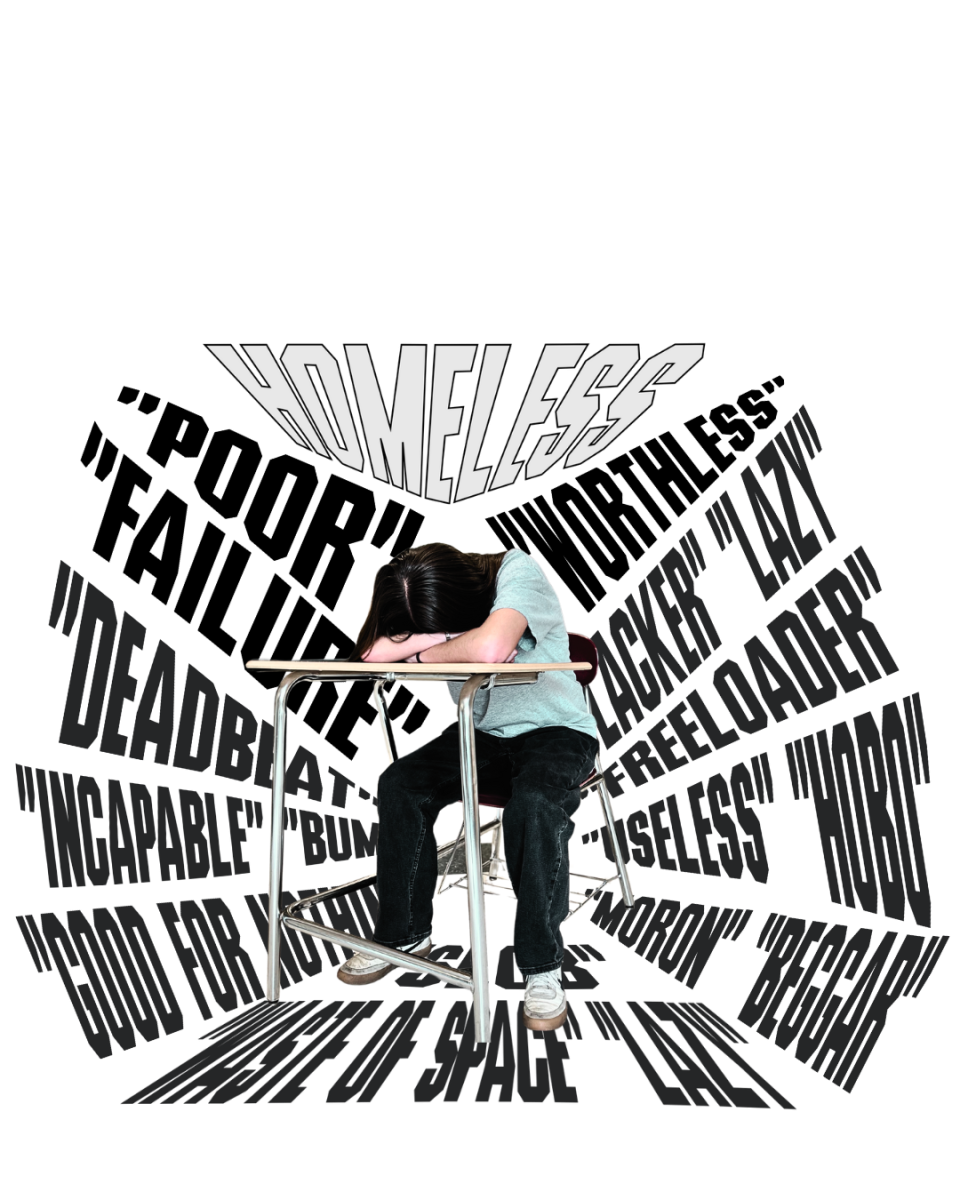The Importance of Religious Diversity
May 31, 2022
This previously ran in our April 2022 print issue.
Emmaus freshman Aashka Sevak identifies as Hindu.
Her faith has always played a vital role in her life, having been celebrating holidays and going to a temple every Sunday for as long as she could remember.
“See yourself to not be better than others, but rather to see yourself as a whole,” Sevak said. “And then [that] you are part of this world and that you need to be a good person and follow your path.”
The concepts and organization of religion branch off into several diverse and extensively profound beliefs, purposes, and ways of worship towards a greater power. Religion often stands as a pillar of faith in one’s life from which they derive their strength, purpose, and values such as love, empathy, respect, and unity.
Through faith, individuals carry their beliefs from place to place. Stepping into a public school environment is equivalent to stepping into a melting pot of different faiths, some of which are outwardly expressed by jewelry or garments.
Although, students that are outwardly expressive of the Islamic faith don’t always have the full luxury of passing through the hallways without scrutiny. According to a survey by the Institute for Social Policy and Understanding, 42% of Muslim parents reported that their children in K-12 schools have been subjected to bullying because of their faith.
In 2016, Muslim Advocates, a civil rights organization that works in the courts, heard back directly from parents across the United States about the bigoted views teachers, students, and administrators had towards Muslims and Arab American children and teens.
“We all think you’re a terrorist,” a Texas school teacher said to a 12-year-old student in front of his classmates. A teach- er in Georgia asked a student wearing a headscarf if she was carrying a bomb. A Wisconsin student had been called “bin Laden” more than three times a week while teachers took no action. These are just a few of the approximately 100 hate crimes Muslim Advocates reported in 2016 that occurred within schools.
One of the most well-known racially-motivated and Isalamphobic incidents occurred at MacArthur High School in Irving, Texas. A 14-year-old boy, Ahmed Mohamed, was arrested on Sept. 14, 2015, for bringing a digital clock he had reassembled in a pencil container to school. Promptly after showing an English teacher his work, Mohamed was reported to the principal, the teacher claiming his item resembled a bomb. Mohamed was then arrested, interrogated by police for an hour and a half, taken to a juvenile detention center, fingerprinted, and had a mugshot photograph taken. When he was released, he was suspended from school.
The police determined that Mohamed had no malicious intent behind his action, and he was accused and charged with no crime.
“I never thought I’d get this far, but since I have gotten this far, I will try my best not just to help me, but to help every other kid in the entire world who has a problem like this,” Mohamed said in a PBS NewsHour interview, just days after his arrest.
In the aftermath of the Sept. 11, 2001, terror attacks, hate crimes and micro- aggressions against Muslims and those perceived to be Muslim (such as Sikhs) rose tremendously. According to the FBI’s Uniform Crime Reporting program, acts of violence and abuse towards Muslims skyrocketed from 28 in 2000 to 481 after 2001. They never returned to the same numbers reported before 9/11.
Dr. Ahmad Chaudhry, who is Muslim, works at the Baitul Ata Mosque in the Lehigh Valley as a religious teacher and events organizer. He believes that negative connotations around Islam stem from the portrayal of the religion in the forms of media and the actions of certain Muslims. “I think much of it is the media’s doing. They only put on TV the bad things Muslims do and ignore much of the good. Part of the reason is also the bad actions of certain Muslims,” Chaudhry said. “When these Muslims commit violence in the name of their religion, they bring negativity to the religion.”
Former President Donald Trump declared a “total and complete shutdown of Muslims entering the United States” during a 2015 campaign rally. In 2017, he signed Executive Order 13769, also known as the “Muslim Ban.” Islamophobic hate crimes rose 15% that year according to Pew Research, and Muslim students once again struggled to carry on their education without being continually stereotyped.
“When I contrast our president with some of the leaders out there and some of the leaders we’ve had, whether Democrats or Republican — it doesn’t matter,” a Muslim man said to Pew Research during Donald Trump’s presidency. “There’s a lack of leadership. And the tone he uses to refer to people — Muslims, Blacks, Mexicans, Jews. The tone he uses is divisive. It’s poor leadership.” Bullying, harassment, and persistent negative and threatening stereotypes portrayed on social media can lead religiously affiliated students to undergo bad grades, poor attendance, and disciplinary issues. Kathryn Anderson, a sociologist at the University of Houston, discovered a vital connection between the mental and physical health of a person of color when undergoing perceived racist treatment.
“Differences in health between racial groups in the United States are significant and persistent,” Anderson said in a Research Gate article. “Social stress theory conceptualizes racism as a social stressor which can produce negative health consequences for racial minorities.”
Chaudhry has endured such treatment. “In school, there were other kids who would call me names. This would sting a bit, but after a while you just ignore it and move on,” Chaudhry said. “I am glad I had a strong upbringing at home to know my faith well and what it really was so that other kids teasing wouldn’t bother me.”
In addition to serving as a religious teacher at Baitul Ata Mosque, the Lehigh Valley chapter of the Ahmadiyya Muslim Community, Chaudhry helps to hold several events open to informing the public. These include Open Mosque nights that discuss the topic of Ramadan and how fasting is an important concept in all religions.
“I have several roles at our local mosque to bring awareness of Islam to the community,” Chaudhry said. “We hold various events to answer questions people in the community may have about Islam.”
Having practiced daily prayers, read the Quran, and celebrated Islamic holidays since he was very young, Chaudhry values being charitable, kind, and respectful to others.
“Islam is about doing good. It is a religion of action based on good intentions,” Chaudhry said. “The Quran, our holy book, tells us to be truthful, charitable, steadfast and have patience in difficult times.”
In a country that has been built upon Chris- tian-associated traditions that bleed into parts of government, straying from Christian norms in familial and societal settings can come with judgment and criticism. Emmaus senior Gwen Simons, who identifies as an Atheist, had a similar experience shifting away from her family’s Roman Catholic practices.
“I feel like a lot of people, especially in America, draw their moral principles from their religion,” Simons said. “And for some reason, if you aren’t really religious in the traditional ways that are accepted, you’re seen as a bad person who doesn’t have any moral principles. And that’s not true.”
In regards to a lack of religious diversity and representation within the school curriculum at Emmaus, Simons believes incorporating information about various religions into historical texts would be beneficial.
“You don’t want to seem like you’re pushing religion on anybody,” Simons said. “But then at the same time, people have been pushing their religion onto the school board and then on the school. So the line has already been crossed.”
Teenagers drifting from their family’s religious beliefs is a more common phenomenon than one would think. According to Pew Research, 52% of teens say they have different religious beliefs that stray from their parents’ own. Meanwhile, 31% believe that only one religion is “correct.”
Possessing the belief that only one faith is true, however, can cause damage when religious diversity runs far and wide in the U.S.
Hinduism, a faith that emphasizes dharma (the internal and inherent nature of reality), stands as the world’s fourth-largest religion and has persisted through centuries of growth, toils, and sufferings as it found its way around the world to the United States.
When the first Indian and Pakistani immigrants arrived in North America during the 19th century, many were strictly referred to as “the Hindoos” by Americans, no matter their actual faith. Ostracized by the United States and the West in general, they were forbidden to bring their families until the 1965 Immigration Act, which enabled Hindus, among others, to unite on American soil.
However, walking in public with a bindi on the forehead attracted unwelcome attention, while Diwali was celebrated in complete isolation within basement-made temples. Indians be- came targets for hate crimes. One of the most prominent incidents was the Dotbuster attacks in the 1980s, in which Indians were brutally attacked by white gangs. Now practiced by 0.5% of the U.S population, Hinduism has never once dwindled through its waves of hateful hardship.
Sevak believes that people should be more open-minded about those of different religions, and try not to play into stereotypes without being educated.
“A lot of people like when they hear about things that are different from the main religions or the most prominent religions in America, they automatically make assumptions of wrong ideas and stereotypical things,” Sevak said. “Like they think that we are snake worshippers, which I guess is true, but they don’t understand the actual thorough meanings behind them.”
She doesn’t feel that Emmaus accommodates enough students of different faiths, taking into account that East Penn is a public, religiously unaffiliated school district. Although there are mandatory days off for Christmas, Easter, and Hanukkah, there are none for Diwali (the festival of lights) or Eid-al-Fitr, which celebrates the end of Ramadan.
“Well, maybe foreigners discover they accommodate some of the holidays, but they don’t really accommodate any of the other holidays or acknowledge them much,” Sevak said. Religious diversity in a country built upon a singular faith can result in harrow- ing, distasteful experiences. As a result, public schools should be a safe space for students of all faiths to be themselves and express who they are in the ways that matter to them.
“It really starts from learning especially at a young age because no one’s born to be ignorant or arrogant, they’re taught,” Sevak said. “So if they learn correctly to be culturally respected, then I think that would be a good starting point.”
Additional reporting by Ayaan Shah.











